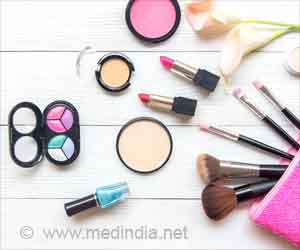To identify these chemical risk factors, Silent Spring Institute scientists sorted out data on more than 2000 chemicals generated by the U.S. Environmental Protection Agency (EPA)’s ToxCast program.
‘Many chemicals in consumer products rise both the estrogen and progesterone hormones to increase breast cancer risk.’
The goal of ToxCast is to improve the ability of scientists to predict whether a chemical will be harmful or not. The program uses automated chemical screening technologies to expose living cells to chemicals and then examine the different biological changes they cause.
They identified 296 chemicals that increase either estradiol (a form of estrogen) or progesterone in cells in the laboratory and seventy-one chemicals increased the level of both hormones.
The chemicals included ingredients in personal care products such as hair dye, chemical flame retardants in building materials and furnishings, and a number of pesticides.
The researchers still don’t know the exact reason behind the chemicals causing cells to produce more hormones. If chemicals act as aromatase activators, it will lead to higher levels of estrogen.
The researchers hope this study will be a wakeup call for regulators and manufacturers to test chemicals for safety. Current safety tests in animals fail to look at changes in hormone levels in the animal’s mammary glands in response to a chemical exposure.
Although high throughput testing in cells have been used to identify chemicals that activate the estrogen receptor, it is not used to identify chemicals that increase estrogen or progesterone synthesis.
“This study shows that a number of chemicals currently in use have the ability to manipulate hormones known to adversely affect breast cancer risk,” says Dr. Sue Fenton, associate editor for the study and an expert in mammary gland development at the National Institute of Environmental Health Sciences.
They also outlined a number of recommendations in their study for improving chemical safety testing that help to identify the potential breast cancer causing agents before they end up in consumer products.
We must find ways to reduce people’s exposures, particularly during critical periods of development, such as during puberty or pregnancy when the breast undergoes important changes.
Source: Medindia



